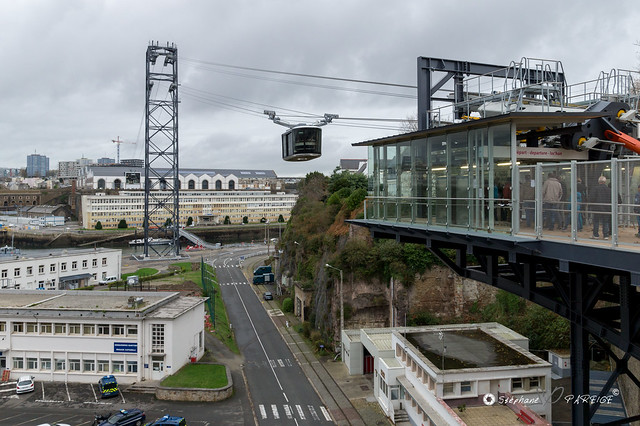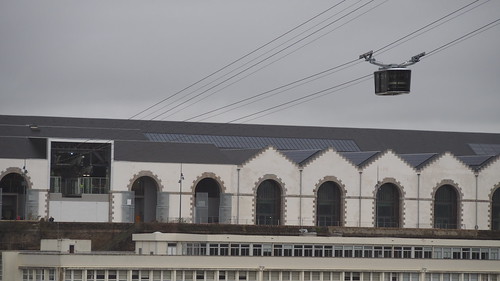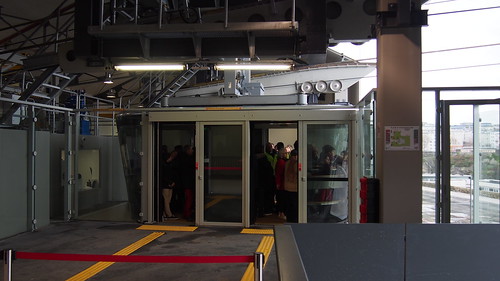France’s first Cable Propelled Transit (CPT) system, the Brest Cable Car has finally opened for passenger service this past Saturday (November 19, 2016).
The 460m long CPT line crosses the coastal river of Penfeld at heights of up to 70m and connects the City Center to the Capucins neigbhourhood (former military/industrial site currently being revitalized).
For city builders, this system has been a long time coming as it effectively demonstrates how ropeway technology has evolved to meet the special needs of the urban market.
DESIGNED FOR CITIES
Firstly, this ropeway system is the second known urban cable car (after Japan’s Morizo gondola) to have implemented smart glass. Smart glass reduces visual intrusion into nearby sensitive land uses as the glass can change from a translucent state to a “frosted/opaque” state.

Smart glass in action. Image from Brest.Maville.
Secondly, and perhaps the most interesting feature is the use of the “Overpass Design”.
The cable lift operates in an aerial tram configuration — however, unlike your typical aerial tram, the manufacturers (Bartholet) have built an incredibly unique system known as the “saut de mouton à câble” or SDMC Concept.

SDMC Concept.
With this design, the two cabins operate on different track alignments, which enables the cabins to travel above and below each other as they move through the central tower. This concept results in considerable space savings (i.e. smaller station footprint) as both cabins utilize the same platform.
In a city setting, this reduction in station sizes will be particularly advantageous since urban real estate is often priced at a premium.
A SLIGHT HICCUP
While passengers and reporters tested the cable car with much delight, a blackout in the neighbourhood happened around 10am and cut power to the ropeway. This incident is still under investigation but some articles online suggested that the power was cut intentionally.
Nevertheless, service was quickly restored as some passengers waited up to 2 hours to board the cable car. Initial counts suggest that a total of 8,800 riders were transported during the weekend!
This of course is a big spike from daily norms (estimated 675,000 annual riders) as the novelty factor and free tickets undoubtedly attracted many leisure riders.
BENEFITS GALORE
At just €19 million (US$20.1 million), a ropeway system was the most logical choice for Brest as a bridge was estimated to cost up to three times more (€30-60 million / US$32-64 million). Aside from just financial considerations, the CPT was chosen for many other advantages:
- Helps relieve congestion on the two nearby bridges of Pont de L’Harteloire and Pont de Recouvrance which sees 70,000 trips daily
- System is fully integrated with local transit where ticket holders can easily transfer onto buses and trams. City center station is located just 100m walk to closest tram station.
- Allows Brest to “expand” City center into new Capucins neighbourhood
- Carbon emissions per km for the ropeway is 30 times less than a car
- System can operate in wind speeds of up to 120km/h
Ultimately, officials in France and abroad will undoubtedly monitor the system’s performance closely for the upcoming months.
Only time will tell what will happen but this might very well be the watershed moment for urban gondolas in France as its success could accelerate plans for the dozen plus proposals all across the country.
| Length (m) | 460 |
| Stations | 2 |
| Year Opened | 2016 |
| Line Capacity (pphpd) | 1200 |
| Trip Time (min) | 3 |
| Frequency (min) | 5 |




